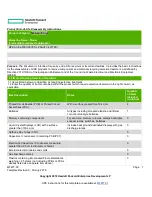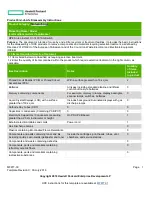
84
Agilent 34945A Microwave Switch/Attenuator Driver Module User’s Guide
4
Introduction to Programming
Sequence Programming
A programming sequence is a set of commands that provide direct control
(open, close, delay) of switches and attenuators. The advantages of using
programming sequences are:
•
a sequence can be given a descriptive name indicating its function or the
signal path it is controlling
•
programming speed is increased (IO - input/output transactions decreased)
•
channel operations (delay/open/close) occur precisely and in the channel
list order specified
A programming sequence can be defined using the Sequences window opened
with the
Sequences...
button on the ‘Browser Web Control’ page (Figure 4-2).
The Sequences window is shown in Figure 4-16.
Defining a Sequence
Sequences are defined by a sequence name, trigger source, and definition (the
commands within the sequence). The commands allowed
within
a 34945A
sequence are limited to those listed in the ‘Sequence Commands’ drop-down
box and include:
ROUTe:CLOSe (@<ch_list>)
ROUTe:OPEN (@<ch_list>)
ROUTe:MODule:WAIT <slot>|ALL
ROUTe:SEQuence:TRIGger[:IMMediate] <sequence_name>
SYSTem:DELay[:IMMediate] <time_in_seconds>
ABORt
Additional guidelines when using sequences include:
1
Sequences are stored in the non-volatile memory of the 34945EXT.
2
Up to 500 sequences can be stored; each sequence must be < 1024 bytes.
3
Sequences can be nested (one sequence can start another).
4
Sequences are not deleted with
SYSTem:RMODule:RESet
5
Renaming a sequence creates a new sequence by that name.
6
Defined sequences can be logged for transfer to other programming
environments (see “An Overview of the ‘Browser Web Control’ Page”).
















































